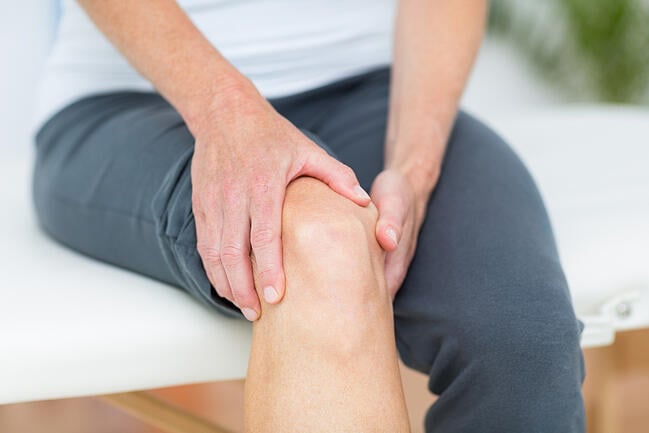Chronic or severe joint pain can be disheartening, especially if it impacts your ability to sleep well through the night. Unfortunately, aches and pains tend to worsen during the evening when inflammation sets in and your joints and muscles are tired from the day. Many people with joint pain dread going to bed because of the discomfort, swelling, and stiffness that awaits them.
While joint pain can be trying, it can also be managed and improved with the right approach. This is especially important if it’s stopping you from getting the sleep your body needs on a routine basis. These tips can help you ease joint pain while getting a better night’s sleep.
Start With a Healthy Diet
Your body needs the right nutrients to promote joint health and reduce painful inflammation. Eating the right foods during the day can help your body feel more prepared for rest at night. A collagen protein supplement can be a good addition to even a highly nutritious diet because it helps directly support joint health.
Foods that help reduce inflammation can relieve painful swelling. Look for options that are rich in omega-3 fatty acids and antioxidants. Salmon, walnuts, cherries, kale, and oatmeal are just a few of the many tasty foods that can help keep your joints healthy for better rest at night.
Keep Your Body Moving During the Day
Most joint discomfort comes from swelling and stiffness. The right kinds of exercise can help reduce these issues so you’re able to relax and feel more comfortable at the end of the day. Low-impact exercises are best for those who suffer from joint pain, so take a nice walk, go for a swim, or ride an exercise bike or elliptical machine to keep your body moving and your blood flowing. Avoid high-impact or sudden-movement activities that could make joint pain worse, such as running, jumping rope, or playing tennis.
Stretch It Out
Before you crawl into bed at night, take 15 minutes to carefully and gently stretch your body, paying careful attention to the areas where you are most prone to joint pain and inflammation. A doctor or physical therapist can help you determine which stretches are safe and effective for you. You can also try some low-key yoga exercises or videos before bed. These types of activities can help relieve pain while also helping your body relax and unwind for more restful sleep.
Be Smart About Your Nighttime Medications
It’s important that you don’t become dependent on sleep medication or pain medication, so follow the instructions for these types of products carefully. Always talk with a doctor first about which products are safe for you to use and how often you should use them. When keeping these considerations in mind, there may be situations where it is appropriate and even recommended to take something before you go to sleep. Even a more natural solution, like melatonin, may make it easier for you to fall asleep when your joints are troubling you. Still, consult with a physician first.
Invest in the Right Mattress
Sometimes, joint pain can be exacerbated by an uncomfortable mattress. You need something with good support that stabilizes the body while gently cushioning your joints to relieve any potential physical stress. If it’s been more than a decade since you purchased a new mattress, it may be time for an upgrade. Getting a new mattress may be extremely beneficial and could significantly improve nightly joint pain.
Build a Healthy Bedtime Routine
Setting yourself up for success at bedtime is bout more than pain management. A good bedtime routine can make it easier for you to fall asleep and stay asleep, even if you are a little uncomfortable. Try to go to bed at the same time each night. Make sure your room is dark and at the right temperature to promote deep sleep. Limit the use of electronics for at least an hour before bed.
If joint pain is keeping you up at night, give these tips a try. If positive, healthy changes aren’t helping, be sure to talk with a doctor about your symptoms to get the help you need.
Most know that good sleep is important, however, they may not realize how many things they are doing that are secretly sabotaging their sleep. If these tips don’t help with your sleep problems, a sleep study may still be the best choice though the type of sleep study varies by a patient’s symptoms. Healthcare providers will monitor your sleep either in a lab or at your home using portable home sleep apnea testing equipment.
If you live in Alaska and are ready to take back your sleep, contact The Alaska Sleep Clinic and receive a free 10-minute phone consultation with a sleep educator who can help you determine if a sleep study is right for you.









